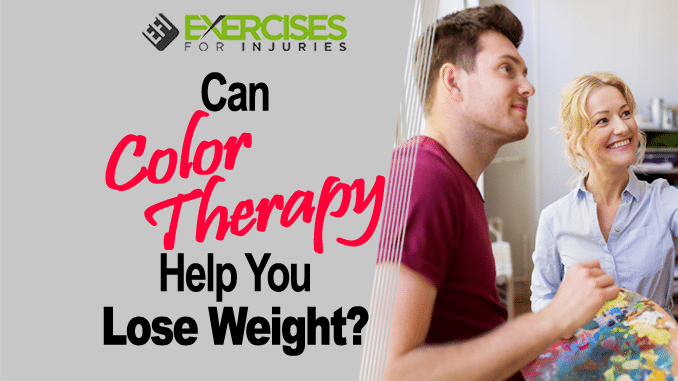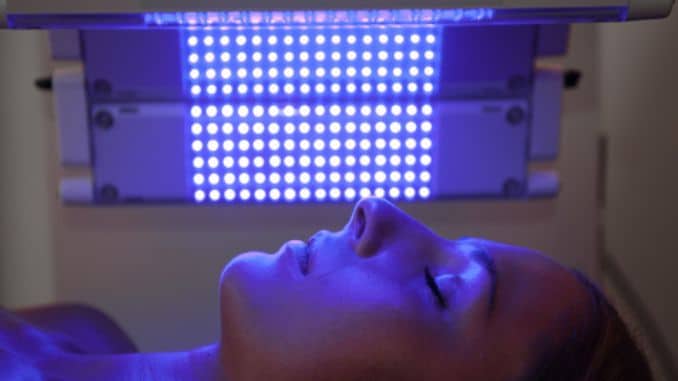
Why does color attract us? When we talk about color therapy, we don’t mean makeup or hair treatment. Instead, color therapy for weight loss uses color as a potential treatment for health or emotional problems. Is there any truth to this practice? For example, can color therapy help you lose weight? You might be surprised at the answer.
Everyone Loves Colors
One of the most common questions you ask someone when you first meet is, “What’s your favorite color?” People choose cars and clothing by their color all the time. Who hasn’t pored over dozens of options when picking just the right shade to paint a room?
Color makes an impact. Nobody has to tell you that if you walk into a room painted all white it’s much different than if it’s painted pitch black. Color therapy for weight loss also uses the impact of colors to influence your well-being and help you achieve your health goals.
For centuries, artists have taken advantage of the power of color to tell a story. Marketing experts know that color makes a big difference in how customers react. For example, on websites, a red “BUY NOW” button usually works better than a green one.

Color Therapy History
Multiple sources point out that in Egypt, Greece, China, India and other countries colors have been used in various ways to promote healing. For example, a treatment room might be painted a certain color or have colored windows.
One of the most detailed analyses of color therapy (also called chromotherapy) [1] comes from Pakistani scientist Samina T. Yousuf Azeemi. His paper on the topic, “A Critical Analysis of Chromotherapy and Its Scientific Evolution,” is a fascinating read.
According to Yousuf, color therapy has been used to treat inflammation, muscle pain, nosebleeds, infertility (in animals), injuries, burns, sciatica, meningitis, nervous instability, headache, irritability, sunstroke, color therapy for weight loss, and more.
One of the problems with color therapy is that quality medical studies really don’t exist to back up the claims. Also, the practice is hard to define. Is it sitting in a colored room? Being immersed in colored liquid? Staring at a colored crystal? All of these practices and more have been used at different times.
Yousuf admits that well-controlled studies don’t exist to prove most of the beneficial claims of color therapy. Plus, many pseudo-religions try to sell color therapy as some kind of miracle cure-all without scientific evidence. Still, is there something out there that might help you to lose weight?
Blue Light Therapy
One type of therapy that does appear to depend on color is blue light therapy. Blue light [2] therapy has been used to treat skin conditions like acne and some skin cancers. Blue light can even be used to prevent skin cancer.
For those looking for help with weight loss, blue light has also been used in the treatment of mental health problems. Moreover, being overweight is not all psychological. However, anybody who has tried to lose weight knows that the mental component is very important. One particular disorder gives us even more insight into the possible color and weight-loss connection, including color therapy for weight loss.
SAD and Light Therapy

Seasonal affective disorder (SAD) [3] is a form of depression that some call the “winter blues.” Symptoms typically appear in the mid-to late fall and continue during wintertime. Symptoms of SAD include:
- Depressed mood
- Lack of interest in activities
- Tiredness and fatigue
- Sleep difficulty
- Experiencing changes in your appetite or weight
- Irritability
- Trouble concentrating
- Feelings of guilt or low self-worth
- Thoughts of death and suicide
Many times, those who suffer from SAD have weight gain and a craving for foods high in carbohydrates. Scientists believe that the cause of SAD may have to do with serotonin and melatonin levels. The low levels of sunlight during the winter lead to a decreased level of serotonin. Normally, this brain chemical lifts the mood and may also suppress appetite.
Light Therapy
One of the most effective treatments for SAD is light therapy [4]. Special light boxes are used to expose you to extra light during the winter season. Moreover, this helps boost serotonin levels. Originally, an intense white light was the standard type of box you could buy. Now, research is showing that blue light might actually be more effective for treating SAD since blue wavelengths have a more powerful effect on the retina.
If part of your weight problem is associated with SAD symptoms, it might be worth consulting with your doctor about light therapy, specifically blue light therapy. Even if you don’t have SAD, could your weight problem have something to do with a lack of light? For example, you might not have symptoms of depression, but you might have carb cravings.
Other types of light therapy have never been shown to work. For example, infrared light exposure (called “red light” therapy) is claimed to help people lose weight. Moreover, the light was applied by lasers or a tanning bed-like device. Moreover, the theory was that the light directly got rid of fat somehow. This technique has never been proven.
However, the blue light therapy used to treat SAD may someday find a place in weight-loss treatment. In fact, some medical researchers are already looking into this kind of treatment for obesity.
Paint Your Kitchen
If you want to avoid hunger-stimulating colors, don’t paint your kitchen to look like a fast food restaurant. There’s a reason burger joints use reds, yellows and oranges in their color schemes all the time. These colors are stimulating and may even stimulate appetite.
Art Therapy Might Be an Answer
Beyond blue light therapy, colors by themselves might not help you lose weight. However, the practice of art therapy may be helpful. While technically not color therapy, art therapy uses various forms of art to help relieve mental stress.
According to the American Art Therapy Association [5]: “Art therapy, facilitated by a professional art therapist, effectively supports personal and relational treatment goals as well as community concerns. Moreover, art therapy is used to improve cognitive and sensorimotor functions, foster self-esteem and self-awareness, cultivate emotional resilience, promote insight, enhance social skills, reduce and resolve conflicts and distress and advance societal and ecological change.” Additionally, color therapy for weight loss can be integrated into these practices to support overall health and well-being.
How Art Therapy Might Help with Weight Loss
Current psychological research shows art therapy may be beneficial in these areas:
- Perception and self-perception: It may help you focus on the present moment, identify emotional responses and understand the relationship between emotion and body awareness
- Personal integration: Leads to improved self-image and a deeper understanding of conflicting emotions
- Emotion and impulse regulation: Helps you control impulses and process emotions
- Behavior change: Art therapy might allow you to change behaviors directed at yourself and others
- Insight and comprehension: May help you to be able to express emotions and nonverbal experiences into more concrete concepts and words
It’s not hard to see how the benefits of art therapy might be helpful if you are struggling to lose weight.
What Should You Do?

The term “color therapy” has taken on many different meanings lately. There’s even a trend of adult coloring books that claim to treat all kinds of problems. While most of these practices are harmless, many are not backed up by scientific research. Also, those that incorporate mystical or pseudo-religious teachings might not be your best option. In some cases, they might cause more emotional distress in the long run.
For weight problems, if you also have any symptoms related to SAD, it’s definitely worth considering blue-light box therapy. Art therapy can also be helpful, but make sure you contact a professional art therapist. Moreover, there’s a lot of confusion out there about treatments under the name of color therapy. You don’t want to waste your money.
Final Thoughts
If you want to lose weight, the old advice of “eat less, exercise more” might not be enough. When you consider other options, you just might find the combination that works for you. For example, through art therapy, you could learn to control eating urges. No surgeries and no pills involved. Sounds like it might be
worth a try, doesn’t it?
For your guide to the best foods to heal your body, check out The Best Foods that Rapidly Slim & Heal in 7 Days, here!


